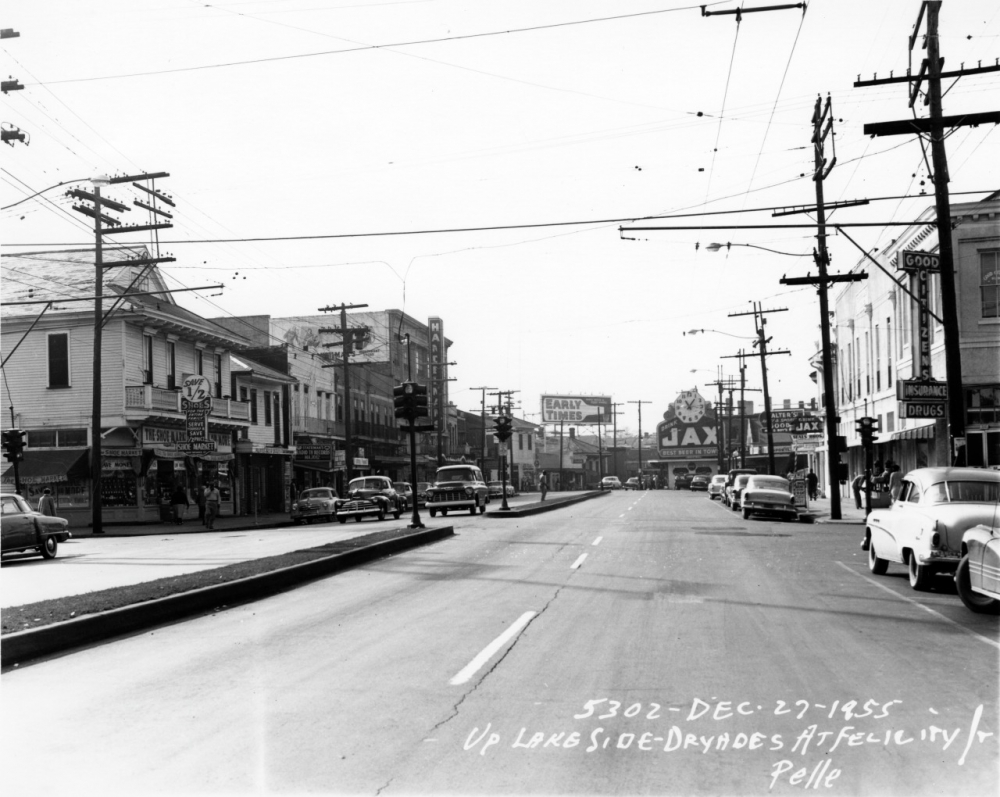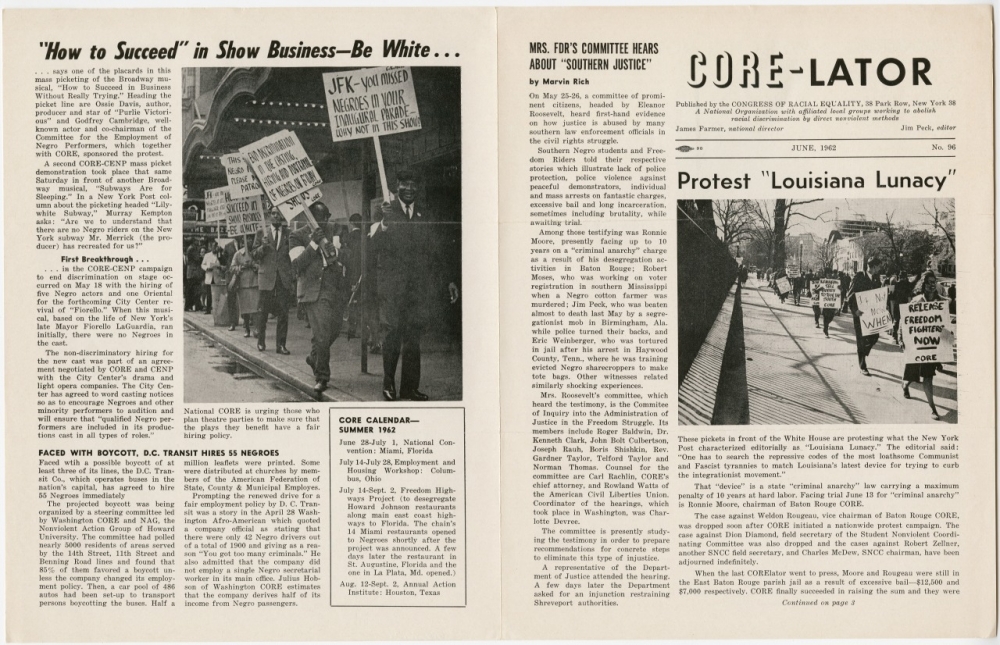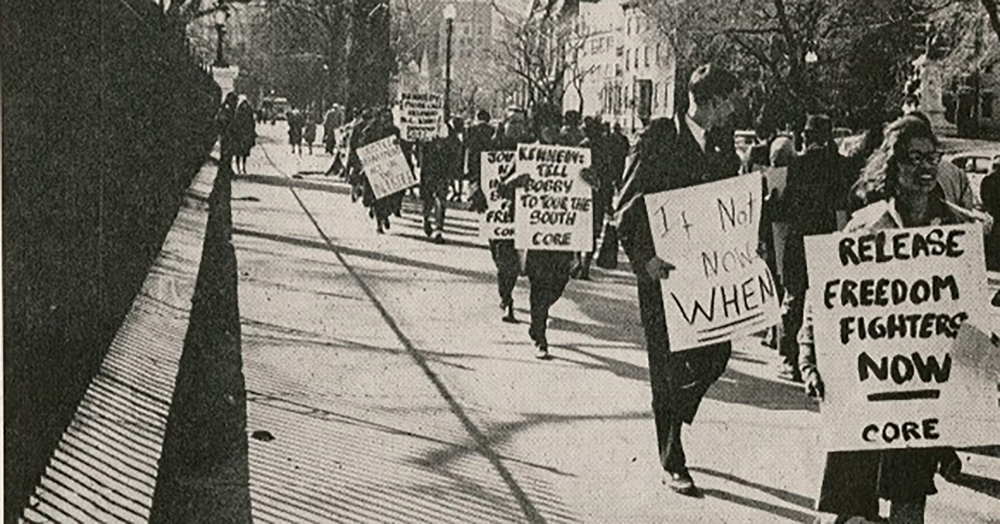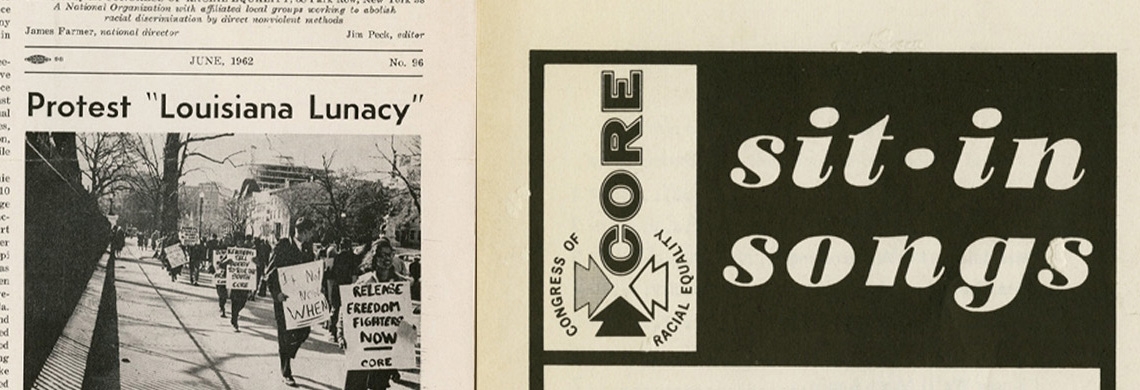Issues related to the integration of schools, businesses, and public facilities dominated the political and social landscape during the 1950s and ’60s in New Orleans. As federal courts began chipping away at Jim Crow statutes during the middle of the 20th century, southern cities were forced to confront long histories of racial inequality and suppression. New Orleans was no exception.
In the spring of 1960, the Consumers’ League of Greater New Orleans—an African-American organization fighting racial hiring discrimination—sponsored a boycott of merchants on the Dryades Street corridor that coincided with the Easter shopping rush. At the time, the street was a primary shopping destination for African Americans; however, the majority of shops were staffed largely by whites. Financial pressures applied by the boycott proved successful in convincing a number of Dryades Street businesses to hire African American workers.

A successful boycott of Dryades Street businesses in the spring of 1960 inspired a group of local college students to get involved in the fight for racial equality in New Orleans. (The Charles L. Franck Studio Collection at THNOC, 1979.325.5215)
Among the many participants in the boycott were a group of local college students who were inspired by its success to get more involved as activists. Future leaders of the movement, including Oretha Castle Haley, Jerome Smith, and Rudy Lombard, formed a local chapter of the national, interracial nonviolent organization Congress of Racial Equality, or CORE. Frustrated with the pace and indirect strategies of older generations of civil rights workers in the city, the local CORE chapter set out to challenge segregationists and fight for the enforcement of the rights of African Americans, as protected and defined by federal law. Their work in Louisiana was covered nationally by the “CORE-lator,” the organization’s official publication based in New York.

The CORE-lator was a national publication that covered the group's activities throughout the US. The issue above shows a group outside of the White House protesting the arrest of a Baton Rouge civil rights leader. (The Historic New Orleans Collection, 2016.0090.2)
Guided by the principles of Mahatma Gandhi and Martin Luther King Jr., CORE members picketed local businesses and public institutions, held sit-ins at lunch counters and public buildings, took part in freedom rides across the South, and worked in rural Louisiana and Mississippi to register voters. Throughout their efforts, CORE members sang protest songs to inspire unity, fortify their resolve, and spread their mission of racial freedom and equality.
Their actions often put members in dangerous situations, which they countered with nonviolent strategies. Many CORE members were arrested for their work. Haley and Lombard were sent to jail for picketing Canal Street businesses. Doris Jean Castle served six months in jail in Mississippi following a freedom ride arrest. A few years later, Castle was arrested in New Orleans during a sit-in at the segregated cafeteria in City Hall. New Orleans police carried her out of the building in her chair as she remained seated in peaceful protest.
Hear from CORE members themselves in this video, which was adapted from interviews taken for THNOC's NOLA Resistance Oral History Project.
CORE’s dignified public protests, which disrupted and exposed segregated businesses and the evils of an inequitable system, were integral to the process of desegregation in New Orleans. Haley’s contributions were recognized when a portion of Dryades Street was named after her in 1989. In its efforts to preserve and document the civil rights movement in New Orleans, THNOC has recorded oral testimony from local CORE members and others who were involved in the cause, which compose one element of THNOC’s NOLA Resistance project.
The NOLA Resistance Oral History Project records testimony from individuals who were active in the fight for racial equality in New Orleans between 1954 and 1976. Click the image below to see videos, lesson plans, and oral histories from the project.














